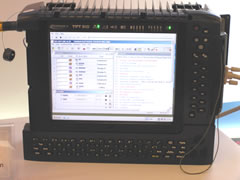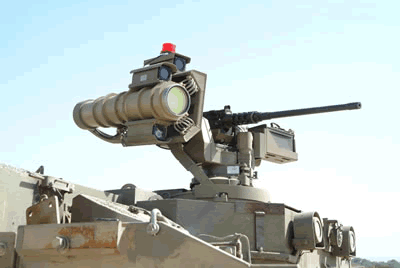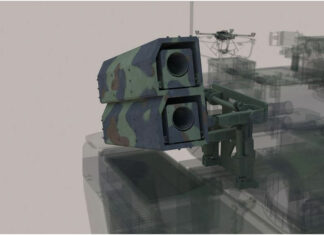As modern warfare is adapting to asymmetric warfare, so does electronic combat, which is diverging from the fixation on engagement in the vicious circle of EW-ECM-ECCM towards addressing the sophisticated, commercial communications and electronic systems, currently used by terrorists and insurgents. The new threat systems range from devices used maintaining loose control over a diversified network of collaborators to the employment of sophisticated IEDs triggered by cellular phones and used as remote controls. Several systems developed to combat these threats were introduced at Eurosatory.
A new complex of Cellular SIGINT and EW systems was exhibited by Tadiran Electronic Systems, a subsidiary of the Elisra Group, which has developed these capabilities as a result of the Israeli war against terror. These new systems enable military and law enforcement security forces to track, trace and engage suspect cellular phones. In contrast to common use of “brute force” jamming, in the attempt to disrupt communications or isolate a suspected IED from the cellular network, the new system employs selective jamming, therefore enabling continued operation of friendly units while incapacitating suspected or unidentified cell-phones. When specific sets are identified as “suspects”, they can be individually intercepted, localized and deactivated by the use of Elisra’s hand-held passive Locator, which can lead intervention forces to the suspect source, or the intervention force can use the Cellective, a selective cellular jammer to deactivate the suspected device even without locating it. This new ensemble enables security forces to intervene in an evolving situation in a “surgical” way, without alarming or inconveniencing the local population, or alerting the suspects.
A different system, which can be used as a powerful IED countermeasure, is the High Power Electro-Magnetics (HEPM)system, available from Diehl and Rheinmetall Defense. HPEM can be effective against roadside bombs and IEDs containing electronic devices (such as acellphone or any other electronic actuating device). An HPEM based counter IED system can cause controlled explosion or deactivation of the charge at a safe distance from the protected vehicle. Rheinmetall and Diehl are offering several types of HPEM modules, including concealed devices that can be embedded in the doors of police cars or convoy protectors. These devices enable highway patrols to stop a suspect vehicle when driving side by side. A similar system can be used to protect a vehicle or a convoy from IEDs. (A typical application was demonstrated by the GEFAS concept vehicle). Different systems developed by both companies will offer ultra-wideband HPEM coverage, from Megaherz to Gigaherz, effectively denying all types of communications with either directional or omni-directional coverage. A typical system is the compact, battery operated DS-110, which disrupts and destroys processor driven electronic modules in any system, by generating resets or inducing power latch-ups, therefore immediately neutralizing the target. The basic system is omni-directional but it can be configured to generate a directional radiation pattern.
Start < Page 3 of 3 >





















